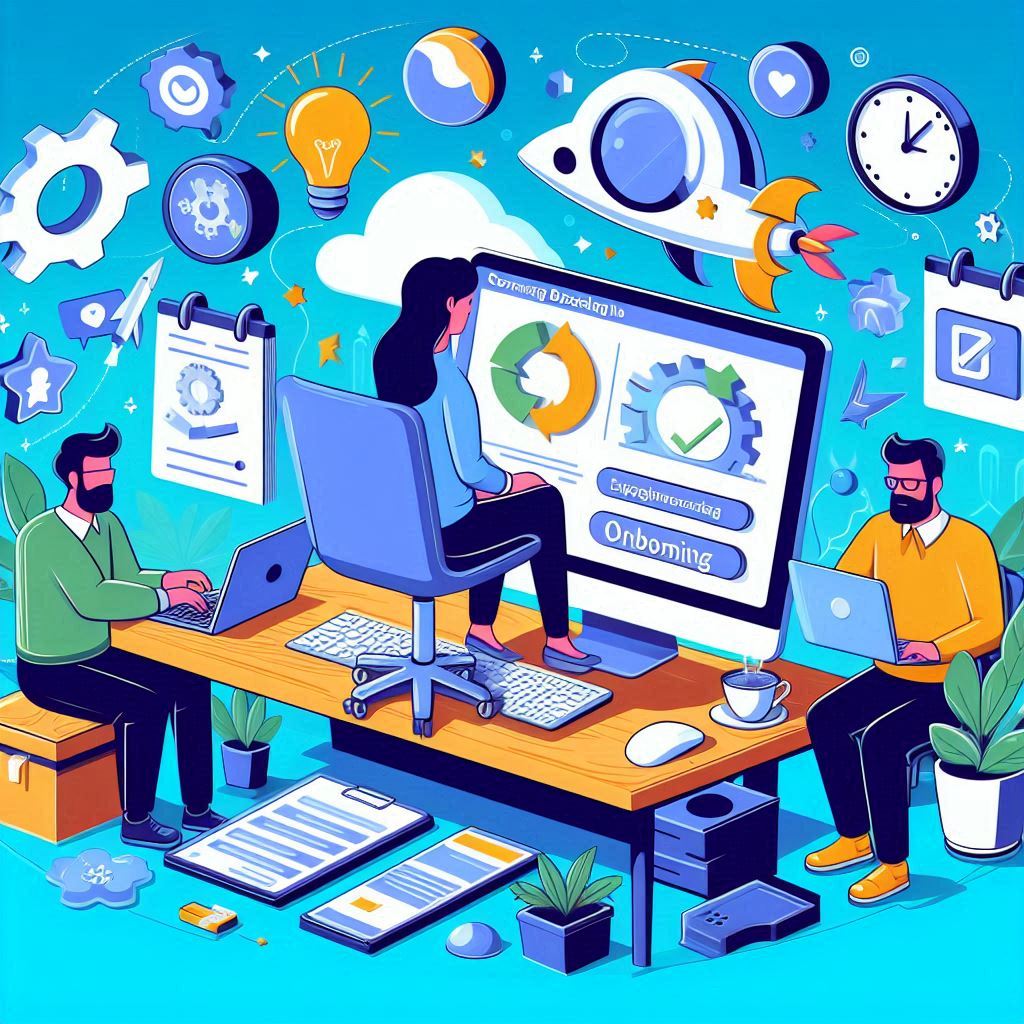Understanding the Challenges of Supporting Software Users Supporting software users is a critical aspect of ensuring customer satisfaction and fostering long-term loyalty. However, providing effective support can be fraught with challenges, particularly in an increasingly complex technological landscape. This article explores the common challenges faced by software support teams and offers insights into how to address them. 1. Diverse User Base Varied Technical Proficiency Software users come from diverse backgrounds and possess varying levels of technical proficiency. Some users may be highly skilled, while others may struggle with basic functionalities. This diversity can make it challenging to provide support that meets the needs of all users. Different Use Cases Users often employ software for a variety of use cases, which can complicate support. A feature that works seamlessly for one user may pose difficulties for another. Support teams must be adaptable and capable of addressing a wide range of scenarios. 2. Complexity of Software Systems Multifaceted Features Modern software applications often come with a multitude of features and functionalities. This complexity can overwhelm users, leading to confusion and frustration. Support teams must be well-versed in the software to effectively assist users with intricate issues. Interconnected Systems Software is increasingly integrated with other systems and platforms, adding layers of complexity. When issues arise, it can be challenging to pinpoint the source of the problem, especially if it involves multiple systems. 3. User Expectations Demand for Instant Support In today’s fast-paced environment, users expect immediate assistance when encountering issues. This demand for quick resolutions can place significant pressure on support teams, particularly during peak times. High Standards for User Experience With the proliferation of user-friendly applications, users have developed high expectations for software usability. When their experience falls short, they may quickly become frustrated and dissatisfied. 4. Managing Communication Effective Communication Skills Support teams must possess strong communication skills to effectively convey technical information to users, especially those with limited technical knowledge. Miscommunication can lead to misunderstandings and unresolved issues. Handling Diverse Communication Channels Users may seek support through various channels—such as email, phone, chat, or social media—each requiring different communication approaches. Managing these diverse channels while maintaining a consistent support experience can be challenging. 5. Knowledge Management Access to Information Support teams require access to accurate and up-to-date information about the software and its features. Maintaining a comprehensive knowledge base is essential for effective support but can be difficult to manage as software evolves. Continuous Training As software undergoes updates and changes, support staff must receive continuous training to stay informed about new features and enhancements. This ongoing training is necessary to provide relevant and effective support. 6. Handling Feedback and Criticism Navigating Negative Feedback Support teams often face criticism when users encounter problems or have unmet expectations. Managing negative feedback and maintaining a positive demeanor can be challenging, particularly when dealing with frustrated users. Leveraging Feedback for Improvement While user feedback is essential for improving the software, support teams must balance addressing immediate concerns with conveying feedback to development teams for future enhancements. 7. Resource Constraints Limited Staffing Support teams may be under-resourced, particularly during high-demand periods. Limited staffing can lead to longer response times and overwhelmed agents, negatively impacting the user experience. Budget Constraints Budget limitations may restrict the tools and technologies available for support. Without access to advanced support tools, teams may struggle to provide efficient and effective assistance. 8. Security and Privacy Concerns Safeguarding User Data Support teams must handle user data with care, especially when addressing sensitive issues. Ensuring data security while providing support is a critical challenge that requires adherence to best practices and compliance regulations. Educating Users on Security Support teams play a vital role in educating users about security best practices. However, conveying the importance of these practices can be challenging, especially to users who may not fully understand the risks involved. Conclusion Supporting software users presents numerous challenges that require a multifaceted approach to address effectively. By understanding these challenges—such as diverse user needs, software complexity, high user expectations, and resource constraints—support teams can develop strategies to enhance their effectiveness. Investing in training, knowledge management, and communication tools can help support teams navigate these challenges and provide a positive user experience. Ultimately, by addressing user needs and enhancing support capabilities, organizations can foster stronger relationships with their users and drive long-term success.
How to Create Engaging User Experiences in Software Applications
How to Create Engaging User Experiences in Software Applications Creating engaging user experiences (UX) in software applications is essential for capturing user interest, enhancing satisfaction, and driving long-term loyalty. A well-designed user experience can differentiate your application in a competitive market, leading to increased user retention and positive word-of-mouth referrals. This article outlines strategies to create engaging user experiences in software applications. 1. Understand Your Users Conduct User Research Begin by conducting thorough user research to understand your target audience’s needs, preferences, and pain points. Utilize surveys, interviews, and usability testing to gather insights that inform your design decisions. Develop User Personas Create user personas based on your research. These fictional characters represent different segments of your user base and help guide design choices by providing a clear understanding of user motivations and behaviors. 2. Design Intuitive Interfaces Prioritize Usability An intuitive interface is crucial for a positive user experience. Focus on simplicity, ensuring that users can easily navigate through the application without confusion. Use familiar design patterns to minimize the learning curve. Utilize Visual Hierarchy Implement a clear visual hierarchy to guide users’ attention. Use size, color, and placement to emphasize important elements and help users quickly identify key features and actions. 3. Implement Responsive Design Optimize for Multiple Devices With users accessing applications on various devices, responsive design is essential. Ensure that your application provides a seamless experience across desktops, tablets, and smartphones by adapting layouts and functionalities accordingly. Test for Compatibility Conduct thorough testing across different devices and browsers to identify any compatibility issues. Ensuring that your application functions smoothly on all platforms enhances user satisfaction. 4. Enhance Performance and Speed Minimize Load Times Slow-loading applications can frustrate users and lead to abandonment. Optimize your application’s performance by minimizing load times through techniques like image compression, code minification, and efficient database queries. Provide Offline Capabilities If applicable, consider implementing offline capabilities to allow users to access critical features even without an internet connection. This enhances usability and user engagement, particularly in areas with unreliable connectivity. 5. Incorporate Personalization Tailor User Experiences Personalization enhances user engagement by tailoring experiences to individual preferences. Use data analytics to deliver personalized content, recommendations, and notifications based on user behavior and interests. Allow Customization Give users the ability to customize their experience, such as adjusting themes, layouts, and notification settings. Providing options for personalization fosters a sense of ownership and connection to the application. 6. Utilize Engaging Visuals and Interactions Incorporate High-Quality Visuals Invest in high-quality visuals, such as images, icons, and illustrations, to create an appealing interface. Aesthetically pleasing design contributes to a positive user experience and captures users’ attention. Add Interactive Elements Engaging interactive elements, such as animations, micro-interactions, and hover effects, can make the user experience more enjoyable. However, ensure that these interactions do not compromise usability or performance. 7. Facilitate User Feedback and Communication Implement Feedback Mechanisms Integrate feedback mechanisms, such as surveys and rating systems, to gather user input on their experiences. This feedback is invaluable for identifying areas for improvement and enhancing user satisfaction. Engage with Users Establish open lines of communication with users through support channels, forums, or social media. Engaging with users shows that you value their opinions and are committed to improving their experience. 8. Create Clear Onboarding Experiences Simplify the Onboarding Process A smooth onboarding process is critical for retaining new users. Use walkthroughs, tooltips, and tutorials to guide users through the application’s features and functionalities without overwhelming them. Highlight Key Features During onboarding, emphasize key features that demonstrate the application’s value. This helps users understand how to maximize their experience from the start and encourages continued usage. 9. Maintain Consistency Across the Application Establish Design Guidelines Create and adhere to design guidelines that ensure consistency in visual elements, typography, and language throughout the application. A consistent design fosters familiarity, making it easier for users to navigate and interact. Consistent Interaction Patterns Implement consistent interaction patterns, such as button styles and navigation methods, to help users predict how the application will respond to their actions. Consistency enhances usability and user confidence. 10. Analyze User Behavior and Iterate Utilize Analytics Tools Employ analytics tools to monitor user behavior within the application. Tracking metrics such as user engagement, session duration, and feature usage provides insights into user preferences and potential areas for improvement. Iterate Based on Insights Use the insights gathered from analytics and user feedback to iterate on your application design. Continuous improvement ensures that your application remains relevant and meets the evolving needs of your users. Conclusion Creating engaging user experiences in software applications requires a deep understanding of user needs, intuitive design, and a commitment to continuous improvement. By prioritizing usability, personalization, and responsiveness, and by actively gathering and acting on user feedback, organizations can foster a positive user experience that drives engagement, satisfaction, and loyalty. In a competitive landscape, investing in user experience is not just beneficial—it’s essential for the long-term success of your software application. By implementing the strategies outlined in this article, you can create software that resonates with users and stands out in the marketplace.
The Role of Leadership in Successful Software Development
The Role of Leadership in Successful Software Development In the dynamic and rapidly evolving field of software development, effective leadership is crucial for guiding teams through challenges and ensuring successful project outcomes. Leaders in this environment are not only responsible for managing resources but also for fostering a culture of innovation, collaboration, and continuous improvement. This article explores the critical role of leadership in software development and how it contributes to achieving project success. 1. Setting a Clear Vision and Strategy Defining Objectives Successful software development begins with a clear vision and well-defined objectives. Leaders must articulate the project goals and align them with the organization’s overall strategy, ensuring that all team members understand their role in achieving these objectives. Creating a Roadmap Leaders should develop a comprehensive roadmap that outlines the project timeline, milestones, and deliverables. This roadmap serves as a guide for the team, helping to maintain focus and direction throughout the development process. 2. Building and Empowering Teams Selecting the Right Talent Effective leaders recognize the importance of building diverse and skilled teams. By selecting individuals with complementary skills and experiences, leaders can create a well-rounded group capable of tackling complex challenges. Empowering Team Members Leadership involves empowering team members to take ownership of their work. By fostering an environment of trust and autonomy, leaders encourage innovation and creativity, enabling team members to contribute their best ideas and solutions. 3. Promoting a Collaborative Culture Encouraging Open Communication Leaders must cultivate a culture of open communication, where team members feel comfortable sharing ideas, concerns, and feedback. Regular check-ins and team meetings facilitate transparency and foster collaboration. Facilitating Cross-Functional Collaboration Software development often involves multiple teams, including design, development, and quality assurance. Leaders should promote cross-functional collaboration, ensuring that all teams work together seamlessly to achieve common goals. 4. Driving Agile Methodologies Implementing Agile Practices Adopting agile methodologies allows teams to respond quickly to changes and deliver incremental value. Leaders play a crucial role in implementing these practices, ensuring that teams follow agile principles and adapt to evolving project requirements. Encouraging Iteration and Feedback Leaders should emphasize the importance of iterative development and regular feedback loops. By encouraging teams to continuously evaluate their work and make adjustments based on user feedback, leaders help improve product quality and customer satisfaction. 5. Fostering a Culture of Continuous Improvement Encouraging Learning and Development Leaders must promote a culture of continuous learning, encouraging team members to pursue professional development opportunities. Providing access to training, workshops, and conferences helps teams stay updated with industry trends and best practices. Implementing Retrospectives Regular retrospectives allow teams to reflect on their processes and identify areas for improvement. Leaders should facilitate these discussions, helping teams learn from their experiences and implement changes that enhance efficiency and effectiveness. 6. Managing Risks and Challenges Identifying and Mitigating Risks Effective leaders proactively identify potential risks and challenges that could impact project success. By developing risk mitigation strategies, leaders can minimize disruptions and keep the project on track. Encouraging a Problem-Solving Mindset Leaders should foster a problem-solving culture, encouraging team members to approach challenges with creativity and resilience. By promoting a mindset that embraces challenges as opportunities for growth, leaders empower teams to overcome obstacles effectively. 7. Aligning Stakeholders and Resources Engaging Stakeholders Leaders play a vital role in engaging stakeholders throughout the development process. By maintaining open lines of communication with stakeholders, leaders ensure that their expectations are met and that any concerns are addressed promptly. Resource Allocation Effective leadership involves strategically allocating resources, including budget, personnel, and time. Leaders must ensure that teams have the necessary resources to succeed while balancing project constraints and organizational priorities. 8. Measuring Success and Celebrating Achievements Establishing Key Performance Indicators (KPIs) Leaders should define clear KPIs to measure project success, such as delivery timelines, budget adherence, and user satisfaction. These metrics provide valuable insights into team performance and project outcomes. Recognizing and Celebrating Success Acknowledging team achievements boosts morale and fosters a sense of accomplishment. Leaders should celebrate milestones and successes, reinforcing a positive team culture and motivating team members to continue striving for excellence. Conclusion Leadership plays a pivotal role in the success of software development projects. By setting a clear vision, building and empowering teams, promoting collaboration, and driving agile methodologies, leaders can create an environment conducive to innovation and excellence. In an industry characterized by constant change, effective leadership is essential for navigating challenges, managing risks, and ensuring that teams remain focused on delivering high-quality software solutions. By fostering a culture of continuous improvement and recognizing team achievements, leaders not only drive project success but also contribute to the long-term growth and development of their organizations.
How to Use Data to Drive Software Innovation
How to Use Data to Drive Software Innovation In the fast-paced world of software development, data has become an invaluable asset that can significantly influence innovation. By harnessing the power of data, organizations can make informed decisions, enhance user experiences, and create products that meet market demands. This article explores how to effectively use data to drive software innovation and foster a culture of continuous improvement. 1. Understanding the Types of Data User Behavior Data User behavior data includes metrics on how users interact with your software, such as usage patterns, feature engagement, and click-through rates. Analyzing this data can reveal valuable insights into user preferences and pain points. Market Trends Data Market trends data encompasses information about industry developments, competitor activities, and emerging technologies. Keeping an eye on these trends helps organizations identify opportunities for innovation and stay ahead of the competition. Feedback and Reviews Customer feedback, reviews, and surveys provide qualitative data that can inform product enhancements. Understanding user sentiment can highlight areas needing improvement and inspire new features that align with user needs. 2. Establishing a Data-Driven Culture Encouraging Collaboration Fostering a culture of collaboration among departments—such as development, marketing, and customer support—ensures that data insights are shared and utilized effectively. Cross-functional teams can brainstorm innovative solutions based on diverse perspectives. Training and Empowerment Provide training on data analysis tools and techniques to empower team members at all levels to make data-driven decisions. Encouraging staff to leverage data in their roles can lead to more innovative outcomes. 3. Implementing Analytics Tools Choosing the Right Tools Selecting appropriate analytics tools is crucial for collecting and analyzing data effectively. Popular options include Google Analytics for web applications, Mixpanel for user engagement tracking, and Tableau for data visualization. Real-Time Analytics Utilize real-time analytics to monitor user interactions and system performance continuously. Real-time insights enable quick decision-making and prompt responses to user needs, facilitating ongoing innovation. 4. Leveraging A/B Testing Testing New Features A/B testing allows organizations to compare two or more versions of a feature or design to determine which performs better. By analyzing user interactions with each variant, teams can make data-driven decisions about feature implementations. Iterative Improvements Use A/B testing results to make iterative improvements to software. Continuous testing and optimization foster a culture of innovation, enabling teams to adapt quickly to user preferences and behaviors. 5. Identifying User Segments Segmentation Analysis Segment users based on demographics, behavior, and preferences to understand different user groups better. This analysis enables tailored solutions and features that cater to specific segments, driving innovation through targeted enhancements. Personalized Experiences Use data to create personalized user experiences. Personalization not only increases user satisfaction but also drives engagement and loyalty, encouraging ongoing software innovation. 6. Using Predictive Analytics Forecasting User Needs Predictive analytics leverages historical data to forecast future user needs and behaviors. By anticipating what users might require, organizations can innovate proactively rather than reactively. Resource Allocation Predictive insights can help allocate resources more effectively, ensuring that teams focus on the most promising innovation opportunities based on anticipated market trends and user demands. 7. Gathering and Analyzing Customer Feedback Surveys and Feedback Forms Regularly gather customer feedback through surveys, feedback forms, and direct communication channels. Analyzing this feedback can uncover user pain points, feature requests, and suggestions for improvement. Customer Interviews Conduct in-depth customer interviews to gain qualitative insights into user experiences. These discussions can reveal hidden opportunities for innovation that quantitative data might not capture. 8. Monitoring Competitive Landscape Competitor Analysis Regularly analyze competitors to identify their strengths and weaknesses. Monitoring their product offerings, features, and user feedback can provide insights into potential innovation opportunities for your software. Industry Benchmarking Benchmark your software against industry standards to identify areas for improvement. Understanding where your product stands in comparison to competitors can guide your innovation efforts. 9. Implementing Agile Methodologies Rapid Prototyping Adopt agile methodologies that emphasize rapid prototyping and iterative development. This approach allows teams to test ideas quickly, gather data on user responses, and make adjustments based on real-world feedback. Continuous Integration and Deployment Implement continuous integration and deployment practices to release updates and new features frequently. This responsiveness to user data and feedback ensures that software remains innovative and relevant. 10. Measuring Innovation Success Defining Key Performance Indicators (KPIs) Establish clear KPIs to measure the success of innovation efforts. These may include user engagement metrics, feature adoption rates, and customer satisfaction scores. Data-Driven Decision-Making Use the data collected to assess the impact of innovation initiatives. Analyzing KPIs helps teams understand what works, what doesn’t, and where further improvements are needed. Conclusion Leveraging data to drive software innovation is essential for organizations aiming to stay competitive and meet user needs effectively. By understanding various data types, fostering a data-driven culture, implementing the right tools, and continuously gathering feedback, software teams can identify opportunities for innovation and improve user experiences. As technology continues to evolve, embracing a data-centric approach will empower organizations to adapt quickly, enhance their offerings, and create solutions that resonate with users, ultimately driving long-term success in the software industry.
The Importance of Training for Software Support Teams
The Importance of Training for Software Support Teams In an era where technology evolves rapidly, software support teams play a critical role in ensuring customer satisfaction and loyalty. Effective training for these teams is not just a benefit; it is essential for delivering high-quality support and maintaining the competitive edge of a software company. This article explores the importance of training for software support teams and how it impacts both customer experience and organizational success. 1. Enhancing Product Knowledge Understanding Software Features Training equips support teams with comprehensive knowledge about the software’s features, functionalities, and potential issues. This deep understanding allows them to provide accurate information and resolve customer inquiries efficiently. Staying Updated with Changes Software products often undergo updates and changes. Regular training ensures that support teams are kept informed about new features, bug fixes, and enhancements, enabling them to assist customers effectively and maintain confidence in the software. 2. Improving Problem-Solving Skills Developing Critical Thinking Effective training programs emphasize problem-solving skills, teaching support staff to think critically and approach issues logically. This training helps them analyze problems and devise solutions quickly, leading to faster issue resolution. Hands-On Experience Providing support teams with hands-on training allows them to practice resolving common issues in a controlled environment. This practical experience builds their confidence and prepares them for real-world scenarios. 3. Enhancing Communication Skills Effective Customer Interaction Training programs can focus on enhancing communication skills, enabling support agents to interact with customers clearly and empathetically. Strong communication fosters positive relationships and helps agents convey complex information in an understandable manner. Active Listening Techniques Training should also cover active listening techniques, which are vital for understanding customer concerns accurately. Support agents trained in active listening can ask clarifying questions and demonstrate that they value customer input. 4. Building Empathy and Customer-Centric Approach Understanding Customer Perspectives Training helps support teams develop empathy for customers by teaching them to understand the challenges and frustrations users may face. This perspective fosters a customer-centric approach that prioritizes customer satisfaction. Creating Positive Experiences When support agents are empathetic and attentive to customer needs, they can create positive experiences that lead to higher customer loyalty and retention. Training emphasizes the importance of customer satisfaction as a key performance indicator. 5. Increasing Efficiency and Productivity Streamlining Processes Training can introduce support teams to tools and technologies that streamline support processes. Familiarity with these tools allows agents to work more efficiently and handle inquiries more effectively. Standardized Procedures Training ensures that all team members are aware of standardized procedures for handling customer inquiries and issues. This consistency reduces errors and enhances overall productivity. 6. Facilitating Team Collaboration Fostering a Collaborative Environment Training programs often encourage teamwork and collaboration among support staff. Building a collaborative environment fosters knowledge sharing and helps agents learn from one another’s experiences. Encouraging Mentorship Establishing mentorship programs within the training framework allows experienced agents to guide newcomers. This not only enhances the skills of the newer team members but also builds a supportive team culture. 7. Reducing Employee Turnover Career Development Opportunities Investing in training demonstrates a commitment to employees’ professional development. When team members feel that their skills are being enhanced and that they have opportunities for growth, they are more likely to remain with the organization. Job Satisfaction Effective training leads to increased job satisfaction, as support agents feel more competent and confident in their roles. Higher job satisfaction correlates with lower turnover rates, reducing the costs associated with recruitment and training new staff. 8. Ensuring Compliance and Security Understanding Regulatory Requirements For many software companies, compliance with regulatory requirements is essential. Training programs should include information about relevant regulations and how to maintain compliance in customer interactions. Security Awareness With the increasing number of cyber threats, training must also emphasize security awareness. Support teams should be educated about best practices for data protection, helping to safeguard customer information and the organization’s reputation. 9. Enhancing Customer Feedback Utilization Gathering Customer Insights Trained support teams are better equipped to gather and analyze customer feedback. They can identify common issues, suggestions for improvement, and potential areas for product enhancement. Contributing to Product Development By effectively communicating customer feedback to relevant departments, support teams can contribute valuable insights that inform product development and improve future versions of the software. Conclusion Training for software support teams is an investment that yields significant returns in terms of customer satisfaction, team efficiency, and organizational success. By enhancing product knowledge, improving problem-solving and communication skills, and fostering a customer-centric culture, training empowers support agents to deliver exceptional service. Organizations that prioritize training create a positive work environment, reduce employee turnover, and enhance their competitive edge in the software industry. As technology continues to evolve, ongoing training will remain crucial for software support teams to adapt and thrive in a rapidly changing landscape.
How to Create Effective Onboarding Experiences for Software Users
How to Create Effective Onboarding Experiences for Software Users In today’s competitive software landscape, delivering a seamless onboarding experience is essential for user retention and satisfaction. Effective onboarding helps users understand your software’s features, guiding them toward realizing its full potential. This article outlines strategies for creating effective onboarding experiences that engage users and encourage long-term usage. 1. Define Clear Objectives for Onboarding Identify User Goals Before designing your onboarding process, understand what users aim to achieve with your software. Are they looking to enhance productivity, streamline workflows, or learn a new skill? Identifying these goals will help tailor the onboarding experience to meet user needs effectively. Establish Key Performance Indicators (KPIs) Determine the KPIs you want to achieve through onboarding, such as user activation rates, engagement levels, and retention rates. Establishing these metrics will enable you to assess the effectiveness of your onboarding strategy and make necessary adjustments. 2. Segment Your Users Create User Personas Develop user personas based on demographics, experience levels, and specific use cases. This segmentation allows you to design personalized onboarding experiences that cater to different user needs and preferences. Tailor Onboarding Journeys Customize onboarding journeys for each user segment. For instance, novice users may require more guidance and tutorials, while experienced users might benefit from advanced feature highlights or shortcuts. 3. Utilize Interactive Tutorials and Tooltips In-App Guidance Implement interactive tutorials and tooltips that guide users through the software interface. Use pop-ups and tooltips to highlight key features, making it easier for users to understand functionalities as they navigate the software. Progressive Disclosure Adopt a progressive disclosure approach, revealing features gradually as users become more familiar with the software. This strategy prevents overwhelming users with information and helps them focus on essential tasks first. 4. Incorporate Multimedia Elements Video Tutorials Create short video tutorials demonstrating key features and workflows. Visual aids can enhance user comprehension and engagement, making it easier for users to grasp complex functionalities. Step-by-Step Guides Develop comprehensive step-by-step guides, either in text or video format, to help users navigate through various tasks. Ensure that these guides are easily accessible within the software. 5. Provide Access to a Knowledge Base Create a Comprehensive Knowledge Base Establish a knowledge base that includes articles, FAQs, and troubleshooting tips. A well-organized knowledge base enables users to find answers independently, reducing their reliance on support teams. Search Functionality Ensure that the knowledge base has a robust search functionality, allowing users to quickly locate relevant information. This efficiency enhances user satisfaction and empowers them to resolve issues independently. 6. Encourage Community Engagement User Forums and Discussion Boards Create online forums or discussion boards where users can interact with each other, ask questions, and share experiences. Building a community fosters collaboration and encourages users to help one another. Social Media Groups Leverage social media platforms to create user groups where users can engage with your brand and each other. This connection can enhance user loyalty and provide a space for users to share tips and best practices. 7. Gather Feedback and Iterate Implement Feedback Loops Regularly gather feedback from users about their onboarding experience. Use surveys, interviews, or feedback forms to understand what aspects are effective and what needs improvement. Continuous Improvement Use the insights gained from user feedback to refine and improve the onboarding process continually. Iteration based on user experiences ensures that your onboarding remains relevant and effective over time. 8. Measure Success and Optimize Track User Engagement Monitor user engagement metrics during and after the onboarding process. Assess how users are interacting with the software, identifying drop-off points, and understanding where they struggle. Analyze KPIs Evaluate the KPIs established at the beginning of the onboarding process. Analyze trends over time to identify areas for improvement and adjust the onboarding experience accordingly. 9. Offer Personalized Follow-Up Support Automated Check-Ins Implement automated check-in emails or messages after onboarding to offer additional support. These messages can include tips, resources, or links to further training materials based on the user’s engagement levels. Dedicated Support Channels Provide dedicated support channels for users who require additional assistance. Ensure that users know how to reach support and feel encouraged to do so if they encounter challenges. Conclusion Creating effective onboarding experiences for software users is critical for fostering engagement, satisfaction, and long-term retention. By defining clear objectives, segmenting users, utilizing interactive tutorials, and incorporating community engagement, organizations can develop a comprehensive onboarding strategy that meets diverse user needs. Gathering feedback and measuring success will enable continuous improvement, ensuring that your onboarding process evolves alongside user expectations. A well-designed onboarding experience not only enhances user understanding but also cultivates loyalty and advocacy, ultimately contributing to the long-term success of your software.
The Role of Automation in Enhancing Customer Service
The Role of Automation in Enhancing Customer Service In today’s fast-paced business environment, providing exceptional customer service is essential for maintaining customer loyalty and satisfaction. Automation has emerged as a powerful tool for enhancing customer service, allowing organizations to improve efficiency, reduce response times, and personalize customer interactions. This article explores the role of automation in customer service and how it can transform the way businesses engage with their customers. 1. Improving Efficiency and Response Times 24/7 Availability Automation allows businesses to provide round-the-clock customer support without the need for human agents to be available at all times. Chatbots and automated response systems can handle inquiries outside of regular business hours, ensuring that customers receive immediate assistance whenever they need it. Streamlining Processes Automated systems can handle repetitive tasks, such as responding to frequently asked questions, processing orders, or managing ticketing systems. By streamlining these processes, customer service representatives can focus on more complex issues, improving overall efficiency. 2. Enhancing Customer Experience Personalized Interactions Automation tools can analyze customer data and previous interactions to deliver personalized responses. For example, chatbots can use customer history to tailor their recommendations, ensuring that customers feel valued and understood. Faster Issue Resolution Automated systems can quickly direct customers to the appropriate resources or agents based on their inquiries. This rapid routing minimizes wait times and helps resolve issues more efficiently, leading to improved customer satisfaction. 3. Enabling Consistency in Service Standardized Responses Automation allows businesses to maintain consistency in customer service interactions. Automated responses can be programmed to adhere to company guidelines and tone, ensuring that all customers receive the same level of service and information. Reduced Human Error By automating routine tasks, organizations can reduce the risk of human error that can occur in customer interactions. Consistent, accurate responses enhance the reliability of the customer service experience. 4. Collecting and Analyzing Data Customer Insights Automated customer service tools can collect valuable data on customer interactions, preferences, and pain points. Analyzing this data helps businesses identify trends, improve service quality, and make informed decisions about their customer support strategies. Performance Metrics Automation allows for easy tracking of key performance indicators (KPIs) such as response times, customer satisfaction scores, and issue resolution rates. These metrics provide insights into the effectiveness of customer service efforts and help identify areas for improvement. 5. Facilitating Multi-Channel Support Seamless Integration Across Channels Automation tools can integrate customer service across various channels, including email, chat, social media, and phone support. This multi-channel approach ensures that customers can reach out through their preferred method and receive consistent support. Unified Customer Profiles By consolidating customer data from multiple channels, businesses can create unified customer profiles. This holistic view enables customer service representatives to provide more informed and personalized support during interactions. 6. Supporting Customer Self-Service Knowledge Bases and FAQs Automated systems can power knowledge bases and frequently asked questions (FAQs) sections on websites, allowing customers to find answers to common inquiries without needing to contact support. This self-service option enhances customer satisfaction by providing immediate assistance. Interactive Voice Response (IVR) Systems IVR systems allow customers to navigate menus and access information through automated phone systems. By enabling customers to resolve simple issues on their own, organizations can reduce call volume and free up agents for more complex inquiries. 7. Scaling Customer Service Operations Handling Increased Demand Automation allows businesses to scale their customer service operations without significantly increasing costs. As customer demand grows, automated systems can manage higher volumes of inquiries, ensuring that service levels remain consistent. Flexibility in Workforce Management With automation handling routine tasks, businesses can optimize their workforce by allocating human agents to areas where they can add the most value. This flexibility ensures that resources are used efficiently while maintaining high service standards. 8. Enhancing Employee Satisfaction Reducing Workload Stress By automating repetitive tasks, organizations can alleviate the workload on customer service representatives. This reduction in routine tasks allows agents to focus on more meaningful interactions, leading to higher job satisfaction and engagement. Empowering Agents with Tools Automation provides customer service agents with tools that enhance their capabilities, such as knowledge management systems and analytics dashboards. Empowered agents are better equipped to assist customers effectively and efficiently. Conclusion Automation plays a pivotal role in enhancing customer service by improving efficiency, personalizing interactions, and enabling consistency in service delivery. By leveraging automated systems, businesses can provide round-the-clock support, streamline processes, and collect valuable customer insights that inform service improvements. As customer expectations continue to evolve, integrating automation into customer service strategies will be crucial for maintaining a competitive edge. By embracing automation, organizations can enhance the customer experience, build loyalty, and drive long-term success in today’s dynamic marketplace.
How to Develop Software with Future-Proof Features
How to Develop Software with Future-Proof Features In an ever-evolving technological landscape, software development teams face the challenge of creating applications that not only meet current needs but also anticipate future requirements. Developing software with future-proof features is crucial for maintaining relevance, ensuring longevity, and maximizing return on investment. This article outlines key strategies to create software that remains adaptable and robust in the face of change. 1. Understand Market Trends and User Needs Conduct Market Research Stay updated on industry trends and emerging technologies. Conduct market research to identify current demands and future projections. Understanding where the market is headed will inform your development process and help you align your software features with user expectations. Engage with Users Regularly gather feedback from users to understand their pain points and evolving needs. Engaging with users through surveys, interviews, and usability tests can provide valuable insights into desired features and potential future requirements. 2. Adopt a Modular Architecture Design for Flexibility Utilize a modular architecture that allows components to be developed, tested, and deployed independently. This approach enables easier updates and modifications to specific features without impacting the entire system, facilitating future enhancements. Microservices Approach Consider implementing a microservices architecture, where the application is divided into smaller, independent services. This allows for greater flexibility, as individual services can be updated or replaced without disrupting the overall application. 3. Implement Agile Development Practices Iterative Development Adopt agile methodologies that promote iterative development. By breaking the development process into smaller increments, teams can quickly respond to changing requirements and incorporate user feedback, ensuring that the software remains relevant. Continuous Integration and Deployment Implement continuous integration and continuous deployment (CI/CD) practices to streamline updates and feature releases. Automating the testing and deployment process ensures that new features can be introduced without significant downtime or disruption. 4. Focus on Scalability Design for Growth When developing software, consider scalability from the outset. Ensure that the architecture can handle increased loads and user demand without compromising performance. This may involve designing databases that can expand and optimizing code for efficiency. Cloud Solutions Leverage cloud technologies to facilitate scalability. Cloud-based solutions allow for flexible resource allocation, enabling businesses to adapt to changing demands without significant upfront investment in infrastructure. 5. Prioritize Security Features Integrate Security from the Start Security should be a fundamental aspect of software development, not an afterthought. Implement security best practices, such as secure coding techniques and regular security audits, to protect against vulnerabilities. Stay Updated on Security Trends Monitor evolving security threats and trends to ensure that your software remains secure. Regular updates and patches will help mitigate risks and protect user data, contributing to the longevity of the software. 6. Embrace Emerging Technologies Incorporate AI and Automation Consider integrating artificial intelligence (AI) and automation features into your software. These technologies can enhance user experiences, improve efficiency, and keep your software aligned with industry advancements. Utilize APIs for Interoperability Design your software to be compatible with APIs, enabling integration with other platforms and services. This flexibility ensures that your software can evolve and adapt as new technologies and services emerge. 7. Maintain Comprehensive Documentation Create Detailed Technical Documentation Maintain thorough technical documentation for all aspects of the software, including architecture, code, and features. Comprehensive documentation facilitates easier updates, onboarding of new team members, and troubleshooting. User Documentation and Training Provide clear user documentation and training resources to help users adapt to new features and updates. This will enhance user satisfaction and ensure they can fully utilize the software’s capabilities. 8. Plan for Long-Term Maintenance Establish a Maintenance Schedule Plan for regular maintenance and updates to ensure the software remains functional and secure over time. This includes bug fixes, performance enhancements, and compatibility updates with evolving technologies. Gather User Feedback Post-Launch Continue to engage with users after launch to gather feedback on new features and identify areas for improvement. This ongoing dialogue will help you adapt the software to changing needs and ensure its longevity. Conclusion Developing software with future-proof features requires a proactive approach that considers market trends, user needs, and technological advancements. By adopting modular architectures, embracing agile practices, prioritizing scalability and security, and planning for long-term maintenance, development teams can create software that remains relevant and effective in an ever-changing landscape. The key to future-proof software lies in flexibility, adaptability, and a strong focus on user experience. By investing in these strategies, organizations can build software solutions that not only meet current demands but also thrive in the face of future challenges.
The Benefits of Providing Multiple Customer Support Channels
The Benefits of Providing Multiple Customer Support Channels In today’s fast-paced digital world, customers expect prompt and effective support from businesses. Providing multiple customer support channels is essential for meeting these expectations and ensuring customer satisfaction. This article explores the benefits of offering various customer support channels and how they can enhance the overall customer experience. 1. Improved Accessibility 24/7 Availability Offering multiple support channels allows customers to reach out for assistance at any time. Whether it’s through email, chat, phone, or social media, customers can access support whenever they need it, improving overall accessibility and convenience. Catering to Diverse Preferences Different customers have different preferences when it comes to communication. By providing various support channels, businesses can cater to the diverse needs of their customer base, ensuring everyone can connect in a way that suits them best. 2. Enhanced Customer Satisfaction Faster Response Times With multiple support channels in place, customers can receive faster responses to their inquiries. For example, live chat often provides immediate assistance, while social media allows for quick interactions. Faster response times can lead to higher levels of customer satisfaction. Personalized Support Multiple channels enable customer service representatives to provide more personalized support. For instance, if a customer has previously interacted with a support agent via email, the agent can reference that interaction in a phone call, creating a seamless and personalized experience. 3. Increased Engagement Encouraging Customer Interaction By offering a variety of support channels, businesses can encourage customers to engage more actively. Whether through social media, community forums, or chat options, multiple channels create more opportunities for customers to communicate and provide feedback. Building Community Support channels such as forums or social media can foster a sense of community among customers. This engagement helps build brand loyalty and encourages customers to share their positive experiences with others. 4. Better Problem Resolution Multichannel Approach to Issues Different issues may require different support channels for effective resolution. For example, complex technical problems may be best handled through phone support, while general inquiries can be addressed via email or chat. Offering multiple channels allows customers to choose the most appropriate method for their specific issue. Knowledge Sharing Having various support channels allows customer service teams to share knowledge and solutions more effectively. For example, common issues identified in social media interactions can be documented and used to improve responses in other channels, enhancing the overall support experience. 5. Increased Efficiency for Support Teams Workload Distribution By providing multiple support channels, businesses can distribute customer inquiries more effectively among support teams. This distribution can prevent overload on a single channel and ensure that inquiries are handled efficiently. Use of Technology Integrating technologies such as chatbots in live chat or automated responses for email can help manage high volumes of inquiries. This use of technology not only increases efficiency but also allows support agents to focus on more complex issues. 6. Data Collection and Insights Gathering Customer Feedback Multiple support channels create opportunities for businesses to gather valuable customer feedback. By analyzing interactions across different channels, businesses can identify trends, common issues, and customer preferences, leading to informed decision-making. Improving Products and Services The insights gained from customer interactions can help businesses improve their products and services. By understanding customer pain points and preferences, organizations can make data-driven changes that enhance overall customer satisfaction. 7. Competitive Advantage Differentiating the Brand In a crowded marketplace, offering multiple customer support channels can set a business apart from its competitors. Customers are more likely to choose a brand that provides convenient and accessible support options, giving businesses a competitive edge. Building Trust and Loyalty Providing excellent support through various channels demonstrates a commitment to customer care. When customers feel supported and valued, they are more likely to remain loyal to the brand and recommend it to others. Conclusion Providing multiple customer support channels is essential for enhancing customer satisfaction, improving engagement, and increasing efficiency within support teams. By catering to diverse customer preferences and ensuring accessibility, businesses can create a more positive support experience that fosters trust and loyalty. The benefits of offering various support channels extend beyond customer satisfaction; they also provide valuable insights that can inform product development and overall business strategy. In an increasingly competitive landscape, investing in a multichannel support approach can be a game-changer for businesses looking to build lasting relationships with their customers.
How to Ensure Seamless Integration of Software Systems
How to Ensure Seamless Integration of Software Systems In today’s interconnected digital landscape, the ability to integrate various software systems is crucial for organizations seeking to improve efficiency, streamline processes, and enhance data flow. Seamless integration of software systems allows businesses to leverage existing technologies, foster collaboration, and maintain a competitive edge. This article outlines effective strategies to ensure seamless integration of software systems. 1. Understand Integration Requirements Identify Business Needs Before starting the integration process, it’s essential to understand the specific business needs and objectives. Determine what systems need to be integrated, the data flow required, and the expected outcomes. Engaging stakeholders from different departments can help capture diverse perspectives and requirements. Define Integration Scope Clearly define the scope of the integration project. Consider the systems involved, the types of data to be exchanged, and any specific functionalities required. A well-defined scope helps prevent scope creep and keeps the project focused. 2. Choose the Right Integration Approach 1. Point-to-Point Integration In this method, individual systems are directly connected, allowing them to communicate with one another. While point-to-point integration can be straightforward for small projects, it may become unmanageable as the number of systems increases. 2. Middleware Solutions Middleware acts as a bridge between different software systems, facilitating communication and data exchange. Utilizing middleware solutions can simplify integration, reduce complexity, and provide greater flexibility for future integrations. 3. API-Based Integration Application Programming Interfaces (APIs) enable software systems to interact and share data. Leveraging APIs is an effective way to integrate systems, as they allow for real-time data exchange and can be customized to meet specific integration needs. 4. Enterprise Service Bus (ESB) An ESB is a middleware architecture that enables communication between different applications in a service-oriented architecture (SOA). This approach facilitates the integration of various systems and provides a centralized platform for managing data flow. 3. Standardize Data Formats Define Common Data Standards To ensure seamless integration, establish common data standards across all systems involved. This includes defining data formats, structures, and terminologies. Standardizing data facilitates easier data exchange and reduces the likelihood of errors. Implement Data Mapping Data mapping involves aligning data fields from one system to corresponding fields in another. Creating a comprehensive data mapping document can help identify discrepancies and ensure accurate data transfer during integration. 4. Prioritize Security Measures Assess Security Risks Integrating software systems can expose vulnerabilities if not managed properly. Conduct a thorough assessment of potential security risks associated with the integration process, including data breaches and unauthorized access. Implement Security Protocols Implement security protocols such as encryption, authentication, and access control measures to protect sensitive data during transmission and storage. Ensure that all integrated systems adhere to the organization’s security policies. 5. Conduct Thorough Testing Test Integration Components Before deploying the integrated systems, conduct thorough testing to identify and resolve any issues. Testing should include functional testing, performance testing, and security testing to ensure that all components work seamlessly together. Involve End Users in Testing Involve end users in the testing process to gather feedback on the integration. Their insights can help identify potential usability issues and ensure that the integrated systems meet user expectations. 6. Establish a Change Management Process Develop a Change Management Plan Integration projects often require changes to existing workflows and processes. Develop a change management plan that outlines how changes will be communicated, implemented, and monitored. Train Employees Provide training to employees on how to use the integrated systems effectively. Ensuring that users are comfortable with the new processes will enhance adoption and minimize resistance to change. 7. Monitor and Optimize Integration Performance Track Key Performance Indicators (KPIs) Once the integration is live, monitor key performance indicators (KPIs) to assess its effectiveness. KPIs may include data accuracy, system response time, and user satisfaction. Regularly review these metrics to identify areas for improvement. Solicit Continuous Feedback Encourage ongoing feedback from users to identify any challenges or issues that arise after integration. Act on this feedback to optimize the integrated systems and enhance user experiences. Conclusion Ensuring seamless integration of software systems is essential for organizations looking to enhance operational efficiency and data flow. By understanding integration requirements, choosing the right approach, standardizing data formats, prioritizing security, conducting thorough testing, establishing change management processes, and monitoring performance, organizations can achieve successful integration. The integration process is an ongoing journey that requires continuous improvement and adaptation to changing business needs. By investing in effective integration strategies, organizations can leverage their software systems to drive innovation and achieve long-term success.











